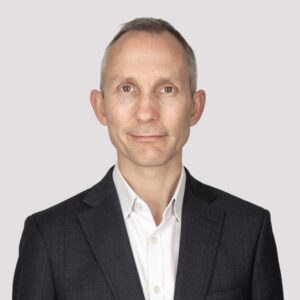28/08/2015
Why do patent professionals spend so much time trying to find the right words to describe an invention? Nick Reeve, partner for Reddie & Grose LLP shows how the story of cloud computing technology, and the words used to describe it, provide an explanation. This article was originally published by the Society for Compters and Law. Click here to view the article.
Who invented the term ‘cloud computing’? This is a question that technology commentators seem to enjoy debating almost as much as the origin of the technology itself. According to reports (see links 1, 2 and 3 in Links and References below), coiners of the phrase include Google and Amazon in 2006, Compaq and NetCentric in 1996, and even AT&T as long ago as 1994.
Like most buzzwords, ‘cloud computing’ was initially introduced as marketing term, in this case to describe the varied and often complex services available for commerce over the internet (long referred to as the ‘cloud’ and frequently depicted as such in technical drawings). With marketing in mind, a number of companies even tried (unsuccessfully) to secure trade mark protection for the term. NetCentric Corporation sought protection in 1997 under US trade mark application US75291765 for educational services relating to global computer or communications networks, and ten years later, Dell Inc. filed US trade mark US77139082 for the design, custom manufacture, and customization of computer hardware for use in data centres and mega-scale computing environments. Larry Ellison, the CEO of Oracle, who has been critical of how the internet has been ‘rebranded’ by cloud computing (4), would no doubt have been further incensed had their applications succeeded.
Looking into the patent record, the term ‘cloud computing’ appears to have been first used in the text of patent applications by Microsoft in 2006. A quick search of patent application titles and abstracts containing the keywords ‘cloud computing’ reveals no results before 2008. Then in 2008, four applications filed by Microsoft in 2006 are published (there is usually a delay of 18 months between filing and publication of patent applications). The next year, three applications are published in the name of Microsoft, two in the name of IBM, and four in the name of Red Hat, Inc. After that the numbers begin to take off, rising to a peak of 59 for Microsoft in 2013, and 79 for IBM in 2013 and again in 2014.
The number of published patent applications per year for the two biggest filers, IBM and Microsoft, are shown in Figure 2. The graph shows how the term ‘cloud computing’ was not used at all in patent literature in the years leading up to 2006 and how it has since become widespread. The graph was generated by searching the Inpadoc patent database using the Espacenet (5) database available from the EPO. More detail is given of the search in the Appendix.
Of course, the trend shown in Figure 2 does not mean that patents relating to cloud computing were not being filed before 2006, it simply means that the term was not appearing in patent applications themselves, presumably because ‘cloud computing’ did not occur to the drafter of the patent application as a reliable term of art. In generating Figure 2, for example, we may have searched instead for the keywords ‘software as a service (SaaS)’ and seen quite a different trend.
The problem of performing meaningful searches in the patent record using only keywords is well known to patent searchers and patent attorneys. To some extent, it can be circumvented by conducting a search using patent classification codes. Cloud computing patent applications, for example, are predominantly classified under the International Patent Classification codes ‘G06F Electric digital data processing’ and ‘H04L, Transmission of digital information’. Searching the patent database for patents in these classifications reveals that more than 100,000 applications are published each year (rising from 50,789 US applications in 2004 for example to 137,588 US applications in 2014). Many of these applications would relate to cloud computing technology even if the applications themselves did not use the term.
As you might expect, searching in classes G06F and H04L for applications in the name of IBM and Microsoft reveals high levels of patent application activity. The year on year numbers of applications filed in these classes is shown in Figure 3. While Figure 2 shows the number of applications referring to ‘cloud computing’ increasing dramatically after 2006, this upturn is not immediately visible in Figure 3, either because the difference in magnitude is too great (the y-axes of Figures 2 and 3 differ by a factor of 100), or because the reclassification of new technology as ‘cloud computing’ did nothing to change the overall technical trend, namely a consistent, year on year commitment to innovation and patent filing.
The Technology
Despite the current ubiquity of cloud computing applications and services, the technology itself is not new. The original concept dates back to the late 1950s and 1960s, when time-sharing schemes were developed to provide users with access to powerful, centralised computing resources housed in colossal mainframe computers. Like now, the user terminals of the time needed little more than a screen and an interface as the processing power was mostly provided by the mainframe.
Although Bob Bemer1 (6) is recognised as one of the first proponents of time-sharing (describing a commercial time-sharing model in a 1957 publication), John McCarthy is credited as an early originator of cloud computing due to his work on the compatible time-sharing system (CTSS) at MITs computation centre in 1957 and his related suggestion of the ‘utility computing’ model. John McCarthy described time-sharing as ‘an operating system that permits each user of a computer to behave as though he were in sole control of a computer, not necessarily identical with the machine on which the operating system is running (7)’, essentially what we would call ‘virtualisation’ today, and envisaged utility computing as a model in which time sharing technology would allow processor power and applications to be supplied like utilities (eg water, gas and electricity) for consumption at the moment of demand.
In the heyday of the 1960s and 1970s, mainframe providers like IBM and General Electric provided customers with time sharing accounts allowing them access to computing resources on a pay-per-use basis. However, time-sharing fell out of favour as the rise of the micro and personal computer markets in the 1980s and 1990s meant that more and more businesses and home users could afford to buy, rather than rent, a powerful computer of their own. Now the tables are turning again, and although personal computers, smart phones, and tablets, are vastly superior to their earlier counterparts, (the graphics processor in Apple’s iPhone5 for example performs calculations around 1000 times faster than the 1975 Cray-1 Supercomputer (8)) the amount of data and the availability of high speed wireless connections means that it makes more sense and is increasingly cost effective to let the network not the user terminal do the real work. In 1999, Salesforce.com was one of the first of the new wave companies to offer ‘cloud’ enterprise applications via its website. Amazon followed in 2002 with its Elastic Compute Cloud and again in 2006 with Amazon Web Services Access, with the Google App Engine appearing in 2008. These days every major software company is in the cloud!
Microsoft’s Applications
As discussed above, Microsoft’s first applications referring to ‘cloud computing’ were published in 2008 at the time this already established technological market was beginning to take on a new lease of life. Of those applications, US2008080396 and US2008080552 concerned a marketplace and hardware architecture for cloud services, and described a broker service for dynamically allocating resources and avoiding deterioration in user experience. US2008082601 and US2008082480 described a gateway between a user and a plurality of ‘cloud-based’ resources, and a data aggregation component that takes data from a number of resources and normalizes it into a common format for standardization purposes.
Rather than describing something that was itself fundamentally new, these applications describe advances in existing technology. What really sets the applications apart from earlier applications however is their use of terminology, and in particular the use of the term ‘cloud computing’ as a new term of art within the application itself.
New Terms: Dangers & Advantages
In patent claims, the use of a ‘new’ technical term can be a double-edged sword. The patent claim defines the legal scope of protection and it is a general requirement that the meaning of a claim be as unambiguous as possible. For new terms, or terms with meanings that are still evolving, how should the claim be interpreted? In the worst case scenario, if the patent examiner cannot be convinced that the use of the term in the claim satisfies the requirement for clarity, the application may be refused.
The claims of US2008082480 refer to ‘cloud-based resources’ perhaps for the first time in the patent record, and Microsoft is careful to explain in the description what ‘cloud’ is intended to mean – just in case the patent examiner is not sure: ‘A ‘cloud’ refers to a collection of data and resources (e.g., hardware, data and/or software) provided and maintained by an off-site or off-premise party (e.g., third party), wherein the collection of data and resources can be accessed by an identified user via a network…’. It is possible in this way to provide meaning for a claim by using a lexicon of technical terms provided by the applicant in the description. However, if the application is to be translated into other languages, the position may still not be clear. Is the Chinese word for cloud computing, simply the combination of the words ‘cloud’ and ‘computing’ or something else?2 If the claim was not translated properly into a foreign language, this could impact on the patent holder’s ability to enforce the patent in court or to recover damages for past infringements.
On the other hand, including in a patent claim a word which possesses some unfamiliarity or ambiguity can be useful strategically, providing the applicant is not hindered by any of the difficulties noted above. When deciding to refuse a patent application, the patent office has to find and show examples of earlier prior art. Not only is prior art relating to a more recently coined technical term likely to be harder to find (in the patent record at least) but, with no clear examples of earlier or related technology to provide a context, an applicant can benefit from positive spin, putting forward a summary of what the term was intended to mean that includes only those interpretations that assist and omitting those that do not.
Additionally, an application that first uses a new term may enjoy a higher utility as a defensive publication, counting as prior art for later filed applications and hindering competitors seeking similar patent protection. US2008080396, since it was published in 2008, has been cited as relevant prior art against more than 100 later filed patent applications in the names of competitors, such as IBM, Amazon Technologies, Red Hat, Inc., Joyent Inc, ZTE, AT&T and UniSys.
Conclusion
Today, most readers would probably feel comfortable with the meaning of ‘cloud computing’, and may even prefer it as a fuzzier alternative to the precise but more clinical terms of art like ‘Internet’, or ‘virtual machine’. However, the sudden emergence of the term in the patent literature in 2008 reminds us that words, like trends in fashion or technology, emerge and change slowly over time, and must always be weighed carefully.
When preparing patent applications for clients, patent professionals agonise over each and every word used in the claims and description to ensure that the applicant’s invention is represented in the best possible way. Further, when designing searches for related prior art, patent professionals must ensure that search terms are not unduly limiting, carving off huge chunks of relevant results unintentionally. Clouds may be fuzzy, but in the world of patents, fuzziness is rarely a good thing.
Footnotes
- As well as time-sharing, Bob Bemer proposed ASCII as the standardised code for computers in 1961, a turn that led him to modestly commission a number plate for his car that read “Father of ASCII”. More about Bob Bemer is available from his website.
- According to Google, the Chinese for cloud computing is exactly that: “???”, being made up of the character “?” for cloud and the characters “??” for computing.
Links & References
- MIT Technology Review (Online) – October 2011 – Antonio Regalado
http://www.technologyreview.com/news/425970/who-coined-cloud-computing/ - WIRED Magazine (Online) – May 2014 – Daniela Hernandez
http://www.wired.com/2014/05/tech-time-warp-cloud-is-born/ - Computer Weekly – March 2009 – Arif Mohamed
http://www.computerweekly.com/feature/A-history-of-cloud-computing - Computer World – September 2010 – Chris Kanaracus
http://www.computerworld.com/article/2513714/enterprise-applications/ellison-announces–one-big–honkin–cloud-.html - Espacenet at the EPO
http://worldwide.espacenet.com/?locale=en_EP - IEEE 2002 Computer Pioneer Award Recipient – Robert Bemer
http://www.computer.org/web/awards/pioneer-robert-bemer - Reminiscences on the Theory of Time-Sharing – May 1974 – John McCarthy
http://jmc.stanford.edu/computing-science/timesharing.html - PhoneArena article – June 2014 – Nick T
http://www.phonearena.com/news/A-modern-smartphone-or-a-vintage-supercomputer-which-is-more-powerful_id57149
Appendix
The data in this article was obtained primarily from the Inpadoc patent database, using the Espacenet service available from the European Patent Office. Esapcenet is a publically available resource that is free to use.
Espacenet allows keyword searching in the abstract and titles of patent application only, not in the patent application full text. Up to four keywords can be used for searching. These are logically connected in the search with the AND operator. By using the ‘Publication Date’ and the ‘Applicant’ fields in the search form, an annual filing profile for a number of different applicants was produced. The results are as follows.
In 2014, the biggest users of the term “cloud computing” in their published patent applications remains IBM and Microsoft. China’s ZTE and Huawei, Red Hat, and Alcatel are also active. The chart below shows the sum totals of all the years from 2007 to 2014.
This data was double checked against the Total Patent database, a commercial service available on subscription. Total Patent allows keyword searching in the full text of the patent. A “cloud computing” keyword search on Total Patent discovered patent applications published earlier than 2008, but these referred to computing journals describing cloud computing in their introduction. The applications did not use the term “cloud computing” in their own right.
Espacenet counts the number of hits as they are viewed by the searcher, and so is not suitable for obtaining data describing the total number of results in a particular area (where the number of results is large and it would be impractical to view them all). For the classification searches where the total number of hits in the classification was needed, Total Patent was used. The results are shown below. The search was further limited to US published applications or CN published applications only to make the numbers more manageable.
This article is for general information only. Its content is not a statement of the law on any subject and does not constitute advice. Please contact Reddie & Grose LLP for advice before taking before any action in reliance on it.


